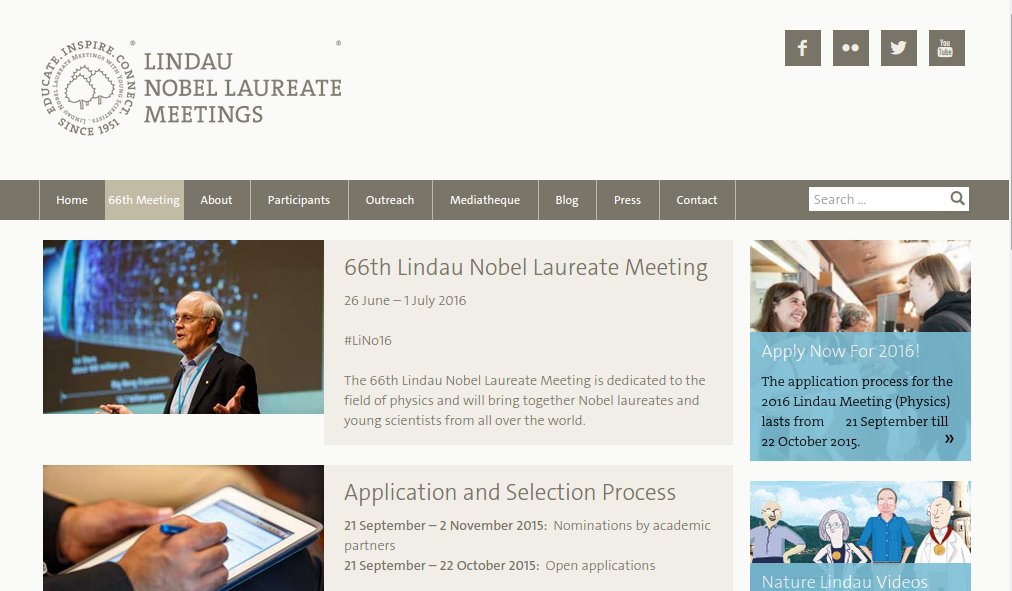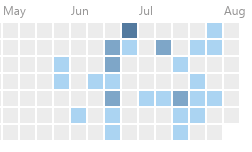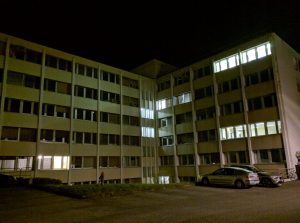
I am in the middle of spending two weeks at CERN. Week 1 just ended, and Week 2 has just begun. I reflect on ducking away from SMU for two weeks of research at CERN during a crucial time for new members of our SMU ATLAS group.
The first week was an “ATLAS Week,” one of our quarterly collaboration meetings to catch up on the progress of the LHC, the ATLAS detector, and the huge portfolio of physics analysis ever-ongoing in the Collaboration, as well as planning for the future of the experiment. The first week was also a time to get together with colleagues over food or at a whiteboard and discuss lives, projects, and trivialities. I also used the time to map out some code that I would like to understand, in anticipation of digging much deeper into that code.
ATLAS Week and Trigger Work
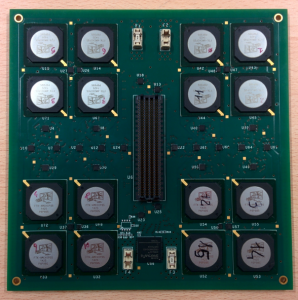
I arrived at CERN together with one of my new graduate students, Matthew, on Monday. We left the US Sunday night and arrived late Monday afternoon. ATLAS Week was already in full swing, but the purpose of this trip was not only to participate in aspects of ATLAS Week; it was a nicely timed bonus. Rather, the goal of Week 1 was to make sure that Matthew was plugged into the b-jet trigger signature group, the place where my corner of the SMU ATLAS group [1] is most involved in technical and operational aspects of the ATLAS Trigger System. It’s nice to “hit the ground running” on a new project, and having students physically at CERN is one of the best ways to accomplish that. Indeed, there were some face-to-face and online meetings early in the week that, as always, clarified the exact first goals of the technical work to which he has committed, and since then he’s been making steady positive progress, which is very good news. The nature of his project is to study the use of FastTrack Trigger (FTK) charged particle track objects when building experimental objects like vertices (collections of tracks that have a common intersection), jets (collections of tracks and neutrals that have a common physics origin, e.g. the fragmentation of a gluon or a bottom quark), and flavor tagging (the use of high-level information to determine the consistency of a single jet with the hypothesis that it arises from the fragmentation and decay of a heavy quark, specifically a bottom quark). The FTK will play an increasingly crucial role in ATLAS, especially with its central role in operations after the Phase 1 upgrade. FTK is an all-hardware track trigger that takes the tracking system hits from ATLAS and uses a pattern-matching algorithm to very quickly reconstruct tracks. From those tracks, the software-level high-level trigger can build complex objects like vertexes and jets without FIRST having to run time- and CPU-intensive track reconstruction software. It’s an amazing system, and I’m excited that Matthew has begun a technical foray into understanding the operational impact of this evolving system in ATLAS.
H->bb Analysis Software – Bottom-Up
I’m trying to take a more active role in the software design and maintenance associated with our H->bb analysis on ATLAS. In general, I’ve always had a flirtatious interest in software design and especially user experience. I tend to avoid it because I actually like it so much, and it can be time-consuming and distracting if you’re not careful. However, this project is tied so closely to the physics I care about in ATLAS that I want to work on it. Thursday, we had a small mostly face-to-face meeting of interested people who discussed for a few hours the kinds of improvements we might make, longer-term, to the framework. It was clear that user-support and documentation were very important to people, and not in a secondary capacity as is common when you just get too busy with the physics to worry about such things any longer.
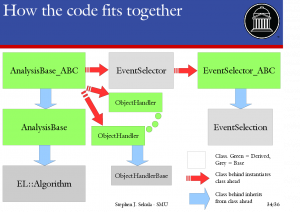
I decided to try to map out the existing framework a little bit, focusing on the most core classes in the core framework packages. This helped me to understand the current system and why it’s so complicated to do simple things. We’ll be working hard on this over the coming months, in parallel with the existing framework as it is used to turn out publishable physics results. We don’t want to disrupt that. But I would think for the resuming of proton-proton data taking next year it would be ideal to have something more fun and more easily used in place to make analysis faster and better. At least, that’s what I want. I hope it will benefit everyone working on H->bb and related analyses.
Social Time
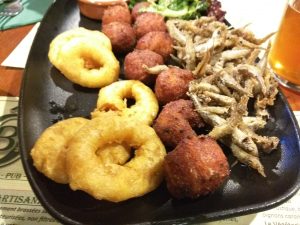
On Thursday, I had a long dinner with colleagues of mine from the more “beyond the Standard Model” (BSM) side of the ATLAS Higgs group. The dinner contained about 3/4 people who are or had run the BSM Higgs subgroup (including me) as well as one former Higgs Group co-convener. It was a fun night, and a chance to catch up with friends off the CERN site.
Friday night was a kind of “group night” – a bunch of us met in St. Genis for dinner and drinks and talked about everything from Hip-Hop as the most structured modern poetry to bad sci-fi movies. It was that kind of night.
The Week Ahead
I have just 6 days left at CERN before I return to Dallas. My third graduate student, Peilong, arrived today to spend the week here as well, getting plugged in. We have a “Trigger for Physics” workshop mid-week, and I also hope to sort out my last graduate student’s technical projects this week. It will be busy, but as always these are things you just cannot accomplish with any efficiency if you are not at CERN.
[1] Learn more about the SMU ATLAS group at our research page: http://www.physics.smu.edu/web/research/atlas.html


